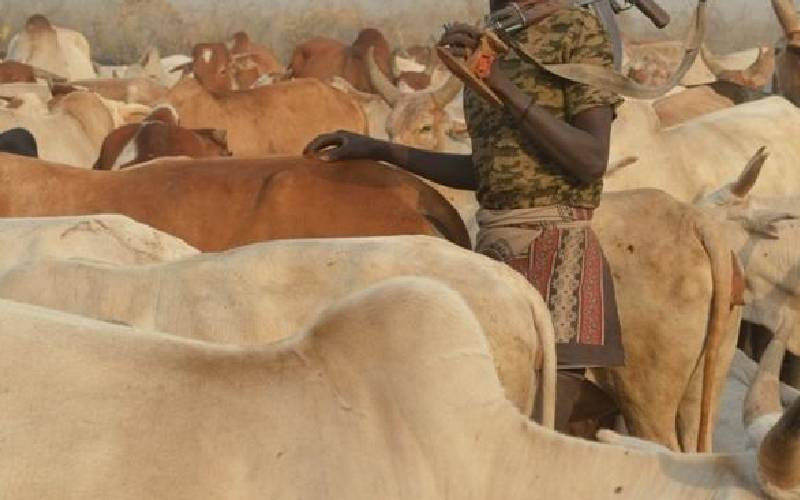By Renson Mnyamwezi
The Kenya Wildlife Service (KWS) has put the rise in poaching in the Tsavo National Park squarely on ‘fake’ livestock herders from Coast, Eastern, and North Eastern provinces.
KWS Tsavo Conservation Assistant Director Wilson Korir also gave identities of several poachers killed in recent crackdowns.
He said poachers, who fled after a clash with rangers in the park at the weekend, are still hiding in forests in the lower parts of Eastern, and Coast.
KWS intelligence and reconnaissance services now believe there is a link between herders from Northern Eastern Province in the encroachment of Tsavo and rise in poaching.
Yesterday, Korir said they have stepped up operations to flush out armed poachers in the sprawling Tsavo National Park.
He said they are recovering weapons including AK47 and G3 rifles, from poachers, who have sneaked into protected game parks and private sanctuaries.
In the bush
“We know where the bandits are hiding. We are closing in on their hide outs,” said Mr Korir.
He said KWS is going full blast to bring sanity in the parks.
“The poachers are hiding in Mutha and Kalalani in Kitui and Bangale in Tana River counties while others are in the bush. Majority of the poachers are from Kamba and pastoralists communities like Orma and Somalis,” he disclosed.
He said a poacher shot dead by KWS rangers in Tsavo two days ago was from the Kamba community while those arrested were from Orma. However, it was not clear how the KWS identified their ethnic identities since those arrested had no identification documents.
“The suspects do not carry identification documents while hunting down elephants and rhinos in the park,” he said.
He said the G3 rifle recovered from poachers must have been stolen from the Government.
Matter of time
Stay informed. Subscribe to our newsletter
“Many guns are in wrong hands and they are being used in criminal activities like poaching,” he noted.
Korir said a rifle seized by poachers from two KWS rangers killed in a community ranch last year, was recovered in Tana River County.
“We are still looking for the other missing rifles. We have intelligence information on the whereabouts of the suspects and it is a matter of time, we will catch up with them,” he said.
Concerns are also being raised over how poachers kill wildlife in well-guarded game parks and private sanctuaries. Korir admitted poachers had killed four rangers and seized weapons in the recent past, raising concern among conservationists.
He also noted widespread subsistence and commercial poaching. In one of the bloodiest poaching incidents in Kenya in recent times, poachers crossed into Tsavo and killed 12 elephants in a day.
High demand
Last week, Kenya Revenue Authority seized 638 pieces of ivory worth Sh100 million at Mombasa Port.
Wildlife conservation agencies are now trying to establish links between port officials, clearing agents and police who have not provided convincing answers on how the ivory landed at the port before it was ‘discovered’ a few minutes later. The ivory haul was heading to South East Asia.
In the past month, over 20 elephants have been killed in the region. Korir blamed fake herders from North Eastern, inadequate personnel and high demand of ivory in China and other Asian countries for rising poaching.
Tsavo needs additional 1,000 rangers to deal with poaching and other wildlife-related crimes.
“We have introduced sniffer dogs to supplement the war against poaching activities and we are also sensitising communities bordering parks to give authorities relevant information,” he said.
 The Standard Group Plc is a
multi-media organization with investments in media platforms spanning newspaper
print operations, television, radio broadcasting, digital and online services. The
Standard Group is recognized as a leading multi-media house in Kenya with a key
influence in matters of national and international interest.
The Standard Group Plc is a
multi-media organization with investments in media platforms spanning newspaper
print operations, television, radio broadcasting, digital and online services. The
Standard Group is recognized as a leading multi-media house in Kenya with a key
influence in matters of national and international interest.
 The Standard Group Plc is a
multi-media organization with investments in media platforms spanning newspaper
print operations, television, radio broadcasting, digital and online services. The
Standard Group is recognized as a leading multi-media house in Kenya with a key
influence in matters of national and international interest.
The Standard Group Plc is a
multi-media organization with investments in media platforms spanning newspaper
print operations, television, radio broadcasting, digital and online services. The
Standard Group is recognized as a leading multi-media house in Kenya with a key
influence in matters of national and international interest.








